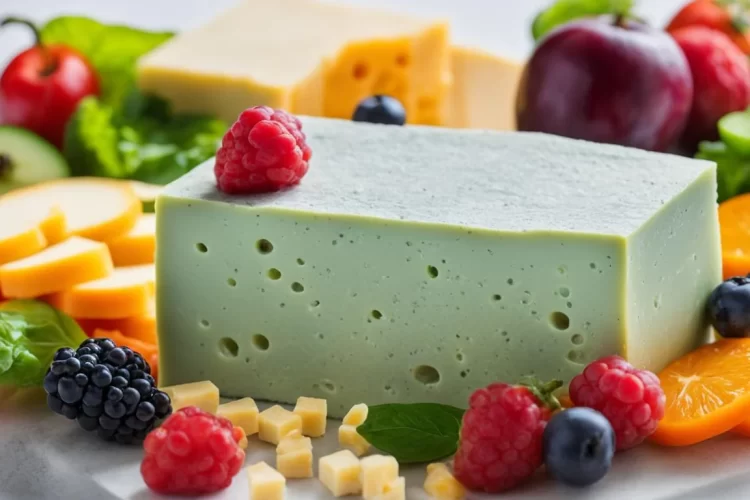Quick Summary:
Say cheese to a world of flavour! From creamy classics to bold vegan bites, dive into a delicious journey across textures, traditions, and taste—one slice at a time. Your ultimate cheese adventure starts here!
Deep Dive
Cheese is a beloved food with a history stretching back thousands of years, reflecting the cultures, climates, and traditions of people across the globe. From the creamy Brie of France to the smoky Bandel of India, from the sharp Cheddar of England to the melty vegan mozzarella now found in supermarkets, the world of cheese is vast, varied, and endlessly fascinating.
The Origins and Diversity of Cheese
Cheese is made by coagulating milk—most commonly from cows, goats, sheep, or buffalo—and then separating the curds from the whey. The curds are then aged, pressed, or treated in various ways to create the wide spectrum of cheeses we know today. Estimates suggest there are over 1,800 different types of cheese worldwide, each with its own texture, flavour, and culinary uses.
Cheeses can be classified by texture (soft, semi-soft, semi-hard, hard, fresh), milk type, origin, and processing method. Some types of cheese are famous for their pungent aromas, others for their mildness, and many for their versatility in cooking.
A Tour of Classic Cheese Types
Here is a curated list of 30 notable types of cheese from around the world, each representing a unique tradition, flavour, or texture:
- Brie (France): A soft, creamy cheese with a bloomy rind, known for its mild, buttery flavour
- Camembert (France): Similar to Brie but with a stronger flavour and creamier texture
- Roquefort (France): A famous blue cheese made from sheep’s milk, with a sharp, tangy taste
- Neufchâtel (France): A soft, slightly tangy cheese from Normandy, often used in desserts and spreads
- Emmental (Switzerland): Known as “Swiss cheese”, it is semi-hard with large holes and a mild, nutty flavour
- Gruyère (Switzerland): A hard cheese with a slightly grainy texture and a fruity, nutty taste
- Cheddar (England): A firm, sharp cheese that ranges from mild to extra sharp
- Stilton (England): A blue cheese with a crumbly texture and robust flavour
- Gouda (Netherlands): A semi-hard to hard cheese with a smooth, mild flavour that becomes richer with age
- Edam (Netherlands): A mild, semi-hard cheese with a distinctive red wax coating
- Parmesan (Italy): Also known as Parmigiano Reggiano, this hard, aged cheese has a granular texture and a nutty taste
- Mozzarella (Italy): A soft, moist cheese that melts beautifully, often used on pizzas
- Gorgonzola (Italy): A blue-veined cheese that can be creamy or crumbly, with a sharp, tangy flavour
- Ricotta (Italy): A fresh, soft cheese with a mild, slightly sweet taste
- Manchego (Spain): A firm cheese made from sheep’s milk, with a fruity, nutty flavour
- Feta (Greece): A brined curd cheese, crumbly and tangy, often used in salads
- Halloumi (Cyprus): A semi-hard cheese with a high melting point, perfect for grilling or frying
- Havarti (Denmark): A semi-soft cheese with a buttery aroma and mild flavour
- Muenster (France/USA): A semi-soft cheese with a mild, buttery taste and an orange rind
- Cotija (Mexico): A crumbly, salty cheese made from cow’s milk, used for topping tacos and salads
- Queso Fresco (Mexico): A fresh, crumbly cheese with a mild flavour, often used in Mexican cuisine
- Paneer (India): A fresh, non-melting cheese made from cow or buffalo milk, widely used in Indian cooking
- Bandel (India): A smoked cheese from West Bengal, known for its chewy texture and spicy aroma
- Chhurpi (Tibet, Nepal, China): Made from yak or cow milk, chhurpi comes in soft and hard forms. The hard type is dried and can last for years, while the soft type is used in curries and pickles.
- Sakura Cheese (Japan): A soft, creamy cheese from Hokkaido, sometimes flavoured with cherry blossom leaves
- Kesong Puti (Philippines): A fresh, soft cheese made from carabao (water buffalo) milk, often eaten with bread for breakfast
- Ayibe (Ethiopia): A mild, crumbly cheese often served as a side to spicy dishes
- Wagasi (Benin): A soft cow’s milk cheese made by the Fulani people
- Caravane (Mauritania): A camel milk cheese, low in lactose and produced by nomadic herdsmen
- Kwaito (South Africa): A Gouda-style cheese made from cow’s milk, available in plain and smoked varieties.
The Rise of Vegan Cheese
With the growing popularity of veganism and the increasing number of people with lactose intolerance, vegan cheese has become a significant part of the cheese landscape. Vegan cheeses are made from plant-based ingredients such as soybeans, peas, cashews, coconut, or almonds. They mimic the flavours and textures of traditional types of cheese and are available in many forms:
- Cheddar: Vegan cheddar is often made from coconut oil and potato starch, offering a sharp, tangy flavour
- Mozzarella: Vegan mozzarella, typically made from cashews or almonds, melts well and is great for pizzas
- Parmesan: Vegan parmesan is usually made from nuts and nutritional yeast, providing a savoury, umami taste
- Gouda: Vegan gouda alternatives are available, offering a mild, creamy flavour
- Cream Cheese: Vegan cream cheese, made from cashews or tofu, is smooth and spreadable
- Brie and Camembert: Vegan versions of these classic soft cheeses are made from nuts and fermented to achieve a creamy texture and rich flavour
- Blue Cheese: Vegan blue cheese is crafted using cultured nuts and blue mould cultures for a tangy, pungent taste
Cheese: A Cultural Icon
From the ancient traditions of the Mediterranean to the innovative kitchens of vegan food producers, cheese remains a dynamic and beloved part of global cuisine. With thousands of varieties to explore—each with its own story, flavour, and texture—there is a cheese for every taste and dietary need, including those who choose plant-based alternatives. The next time you enjoy a slice of brie, paneer, or vegan cheese, remember: you’re tasting a piece of history, culture, and culinary creativity.

